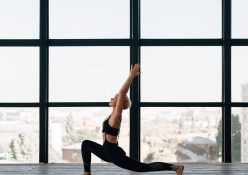Running shoes can make or break your run – literally! From sore knees to blisters, finding the right shoes for the way you move is crucial.
Walk into a sports shop these days and you’re faced with walls and walls of shoes: colourful, quirky, meshed, padded, gel, flyknit, boosted… The extensive range of running shoes is amazing, don’t get us wrong, but it does leave us feeling a little lost. If you are only just finding your feet in the running scene and have no idea what works for your feet, where do you begin? FitLife took up the challenge and sought the expertise of some running-shoe experts to find out what it takes to find your perfect fit.
Choose your type
When it comes to running shoes, there are three main types: stability, motion control and neutral/cushioning. Each cater to the different needs of runners and their feet, to ensure optimum performance. ‘These types of shoes differ from each other in a number of ways, the most important one existing in the midsole of the shoe,’ says Running Shoes Guru Owner and Founder Ruggero Loda. Deciding on which style is best for you comes down to determining how your feet pronate.

Pro-what now?
Pronation, according to marathon coach Wendy Bumgardner, ‘refers to the natural side-to-side movement of the foot as you walk or run’. There are three main types of pronation (hence the three different styles of running shoe): normal/neutral, supination and overpronation.
Neutral is when your foot rolls slightly inwards as you walk or run. Supination is when your foot rolls outward excessively during each stride, and normally occurs in people who have high foot arches. The third, overpronation, occurs when the foot rolls inwards too much, increasing the pressure on your toes during push-off and causing your foot to twist more.
Supination and overpronation require specific shoe characteristics to support the feet and prevent injury.
What to look for
Aside from finding the right size, fit and style, you also need to consider your goals, the training you do, and your budget. ‘For an ideal running shoe, you would look at the fit and feel from person to person, as everyone has a different running style,’ says Corrie Lamont, manager at The Sweat Shop, Cape Town. ‘You will know that the shoes are right for you if you don’t get any injuries or experience discomfort.’
Grab some socks and go find these running kicks at Totalsports!

For the full article and more fitness tips, grab your September issue of Fitlife.






